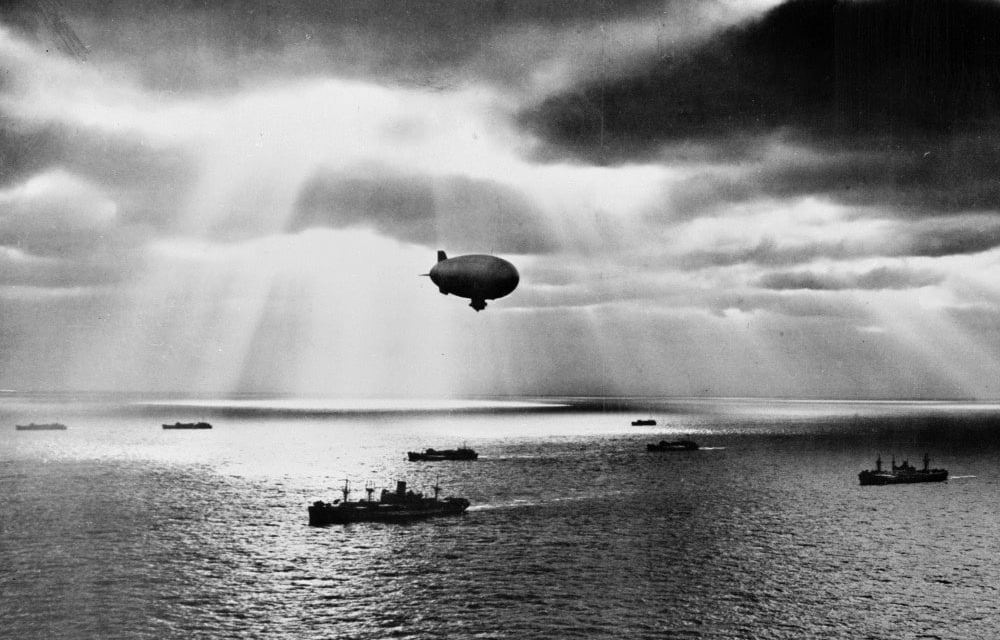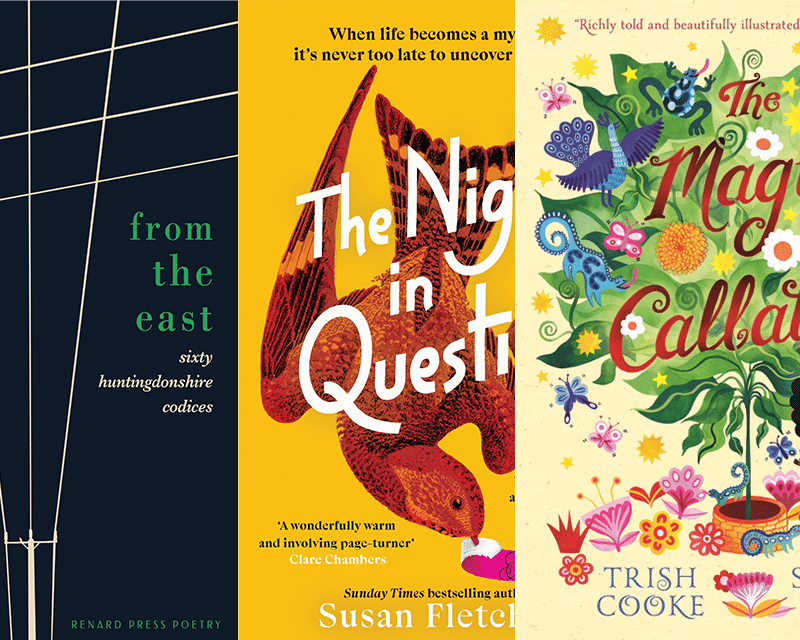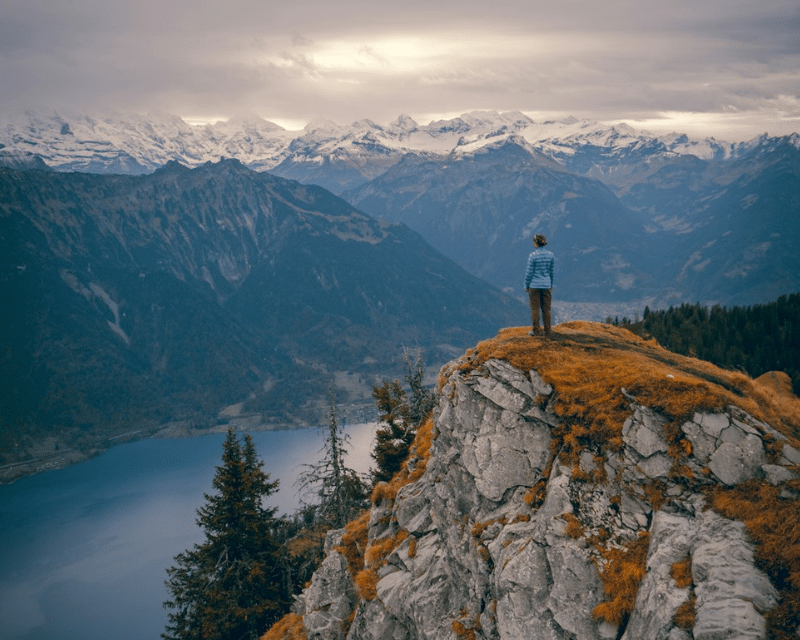- Collected
- Article
The Waves Beneath
Telling refugees’ stories

- 28 November, 2016
- Clare Bayley
Flying to Toronto, 30,000ft above the Atlantic, I’m too high to see the waves beneath me, but I can imagine them. Seventy years ago, my mother made the same journey, altogether more slowly and perilously than me. She went by ship.
I’m travelling to Canada for the opening of my play The Container; my mother was an unaccompanied 13-year-old evacuee. After the Dunkirk debacle, her father, who had seen the suffering of women and children in France during the First World War, was determined to get his children to safety. When the University of Toronto offered to take in the children of Oxford academics, he didn’t hesitate.
My journey takes eight hours, and they are relatively comfortable ones, even in WestJet’s economy class. My mother’s convoy involved three and a half weeks of zig-zagging across the Atlantic in rough seas, trying to evade German U-boats, sailing as close to the icebergs as they dared. For a schoolgirl travelling alone for the first time, on her way to an unknown country for an indeterminate time, it was terrifying.
One of the other unaccompanied passengers was a three-year-old girl, Kutzy, in the care of a couple who had agreed to look after her for the duration of the voyage. Kutzy’s parents were following on a later ship. The waiters paid the little girl special attention. Kutzy became the baby of the ship. But before they arrived in Toronto, the news came through that the ship carrying Kutzy’s parents had been sunk by a torpedo, with catastrophic loss of life. Kutzy was now an orphan. My mother still shudders when she retells the story. Her childish anxiety coalesced at that moment into the cold, hard knowledge that her abstract fears were entirely well-founded.
My play The Container tells the story of five people in the back of a lorry crossing Europe, all of them fleeing poverty, war or persecution and hoping to make it to the UK. It was first produced in 2007 when stories of smuggled refugees first started making headlines. I wanted to humanise their stories, to counter the newspaper headlines about ‘migrants’. I thought I was writing a play about a relevant social issue, which I had chosen for political reasons.
It wasn’t until I made this journey to Toronto that I realised how much the stories of my mother’s journey had shaped me as a writer. I might never have made the connection between her story and those of my characters fleeing conflict in Afghanistan, Somalia and Turkish Kurdistan. After all, despite the bombing, my mother wasn’t actually fleeing war — the invasion never happened. She survived the journey. She learned to love the city that took her in and the Canadian way of life — canoeing in the Ontario lakes, swimming in those clear, cold waters. And after three years, she was able to return home to her parents.
In the hierarchy of suffering, this story does not rank very highly, perhaps. And yet, the psychological effects of such a childhood experience can be profound. Earlier this year I had a memorable encounter with a seventy-year-old German artist on a retreat at a Mallorcan farmhouse. She had never married, had no children and lived alone. She was ethereal and strangely virginal, yet flirtatious, especially with another septuagenarian American who lived on the finca. She made jokes about ‘naked dancing’.
She also said that her colourful, expressive paintings were a response to the German theorist Theodor Adorno’s contention that writing poetry after Auschwitz was barbaric; her art was an attempt to prove him wrong. Later, she confided that at the age of fifty she had recovered a long-buried memory. She knew that, at the end of the Second World War, she and her mother and siblings had been forced to flee the approaching Russian army, and had attempted to rejoin her father, who was in the western part of Germany. She was ten years old. She remembers going into a forest with her mother, and a man being there, and that afterwards they were happy because they could carry on with their journey. Forty years later, her mother told her that the man, a soldier, had raped her, in front of her daughter. It was the price for passing on west.
Only then had the artist understood the root of the problems she had always had in her relationships with men. She leaned in close to me and indicated the American across the table. ‘He has been helping me with this problem,’ she said, and winked.
As artists she and I are still unpacking the legacy of our mothers’ trauma, more than half a century later. This makes me think again of the many thousands of children caught up in the current migration crisis. What will be the long-term repercussions of their individual traumas?
That journey to Toronto, however mild in comparison to the journeys made by the child refugees of today, has marked my mother’s life. It has given her lasting insecurities and a susceptibility to anxiety. Now almost ninety, and living alone, she hopes to find a companion to help around the house. Waiting to find someone suitable has become confused in her mind with those first days of arriving in Toronto.
Every morning my mother, her younger brother and the other evacuees would gather in a hall and wait to see who would claim them. Little Kutzy was quickly adopted by the couple who accompanied her on the boat. On each subsequent day, more of the remaining children would be fostered. My mother and her brother were among the last to be picked. They puzzled over what it was about them that people didn’t like the look of. They feared that nobody would want them. My mother has been apologizing for herself ever since.
In the end an austere professor took pity on the final six remaining children. He took all six to his cottage in Muskoka for the summer; in September he fostered my mother and her brother, and found homes for all the others.
His wife, however, was not so welcoming. It is unclear to me, as it is still unclear to my mother, why her foster-mother took such a dislike to her. Certainly the young English girl was very pretty. But there was no impropriety from the professor (which was not the case for one of her fostered friends). My mother was well behaved, obedient, tried not to make a fuss. Whatever the reason, the woman picked on her, criticising her and accusing her of petty misdemeanours of which she was innocent. My mother’s sheltered upbringing left her ill-equipped to deal with hostility from an adult.
Years later, she showed me the letters that she wrote home from Canada. As this was wartime, letters were routinely censored to prevent sensitive information falling into enemy hands. Yet all the parts that complained of unhappiness had been struck out in a black pen that was subtly different from the official censor’s marks. In some letters, handwriting that is ever so slightly different from my mother’s extolls her foster-mother’s kindness and generosity.
While I was in Toronto, I met Afsoon Houshidari, a brilliant young immigration lawyer who arrived in Canada as a refugee, as a child. As part of the Baha’i community in Iran, Afsoon’s family was persecuted in the 1980s. When she was three years old, after the arrest and execution of her uncle, she and her parents walked across the desert for two days to reach the border with Pakistan. They had no possessions, hardly any food or water and their ‘guides’ stole most of their money. Yet a sympathetic and tenacious Canadian immigration officer in Pakistan, Dennis Scown, went to great lengths to ensure their safety. Now Afsoon is a wonderful testament to enlightened Canadian immigration policies.
A few months ago, she was invited to appear on a panel discussion about immigration, alongside a retired officer. She realized to her amazement that his name was the same as the one on her documents: Dennis Scown. Afsoon was emotionally reunited with the man whose actions had enabled her life to become what it is today.
Recently, Afsoon has begun telling her own story of fleeing Iran and becoming a resettled refugee in Canada. She describes eloquently how it has taken her this long to feel comfortable about doing so; partly for fear of reprisals on her relatives back in Iran, partly because she was tentative about reviving painful memories for her parents. Perhaps being reunited with Dennis Scown was the catalyst.
About ten years ago, my mother sought out Kutzy, the little girl from the ship. They had not seen each other for over sixty years. They sat in my mother’s living room drinking tea and marvelling at their lives, laughing about how old they had both become.
Such stories can have happy endings. People are resilient. But the effects of suffering can resonate for generations. Once you have become sensitised to them, they never leave you. As an artist or a writer you may disguise them in your work. You may write at a tangent to them, perhaps. But you can’t not write about them — even if it takes you half a lifetime to realise that you are.
You might also like:
No facts, only versions
Memoirs are as much about what is excluded as what is included. This edition examines how you can evoke the…
RLF Fellows’ News: April 2024
Publishing News RLF Fellow Trish Cooke’s new children’s book, The Magic Callaloo, is set to be published by Walker Books…
Susan Fletcher on outsiders in fiction – literal and imagined
I’ve always known that I’ve preferred to be outside. To be an outsider – literally, and, specifically, amongst wild places…


